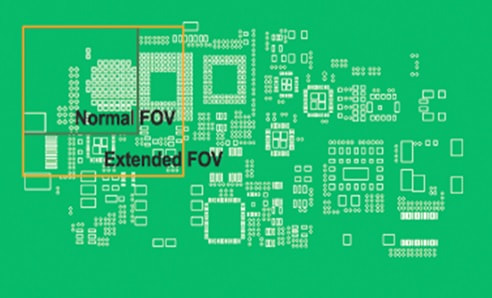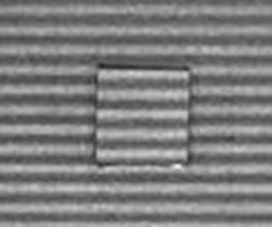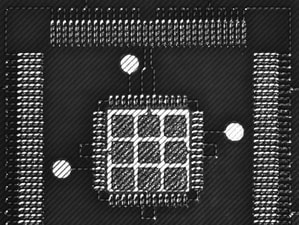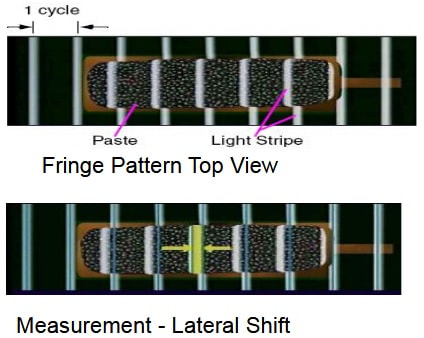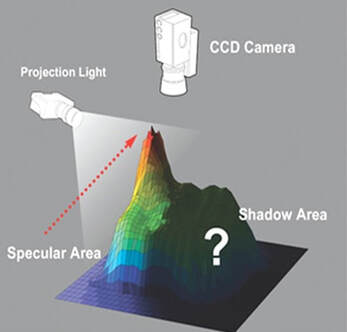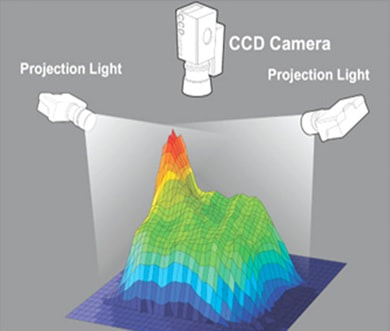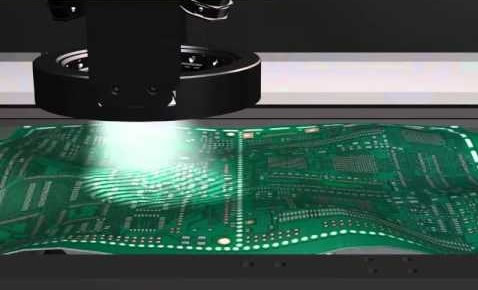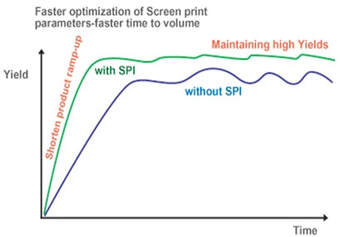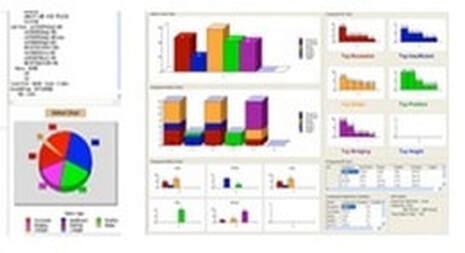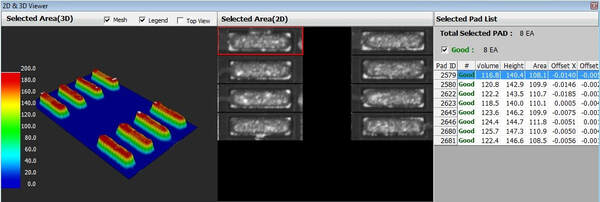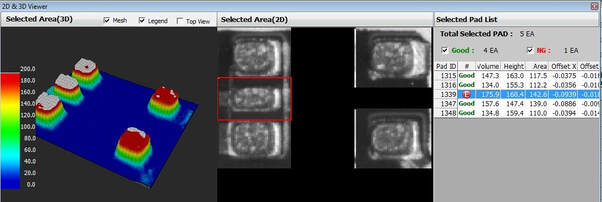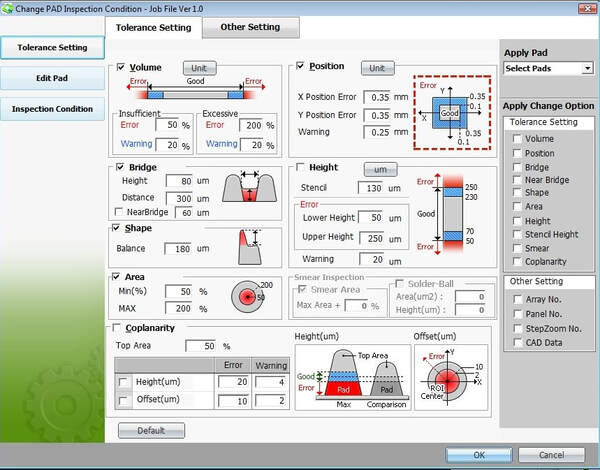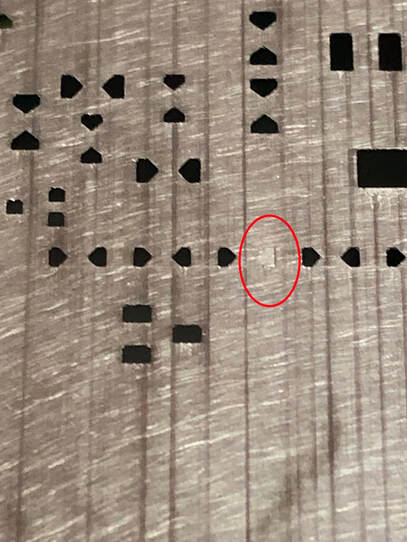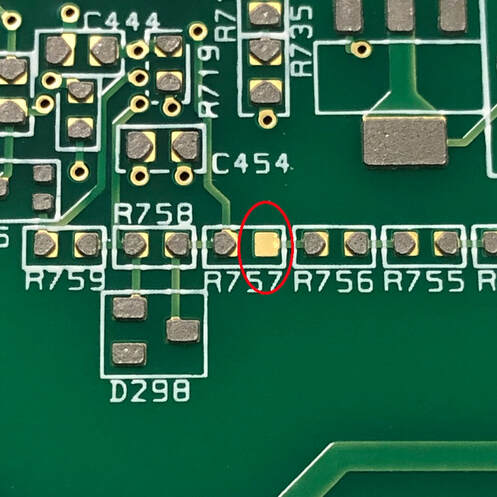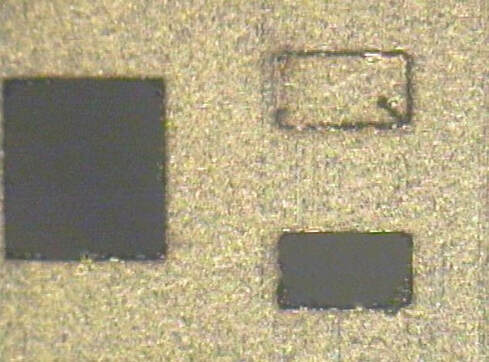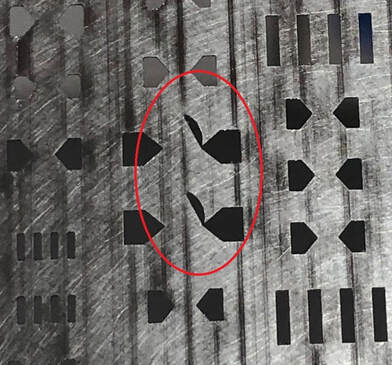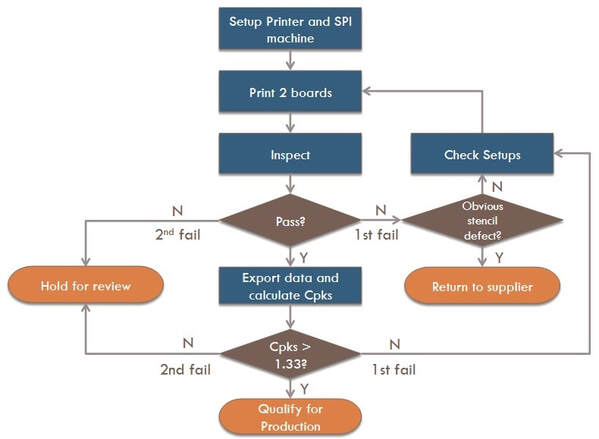|
|
|
The solder paste printing process is one of the most important parts of the surface mount assembly process. The earlier a defect is identified the less it will cost to correct – a useful rule to consider is that a fault identified after reflow will cost 10 times the amount to rework than that identified before reflow - a fault identified after test will cost a further 10 times more to rework.
In order to ensure the desired amount of solder paste has been deposited without defects and that the process is repeatable it is important to have a thorough and reliable inspection method. As components become smaller and more complex the control of the solder paste printing becomes more challenging and so it is recommended to fully inspect every printed PCB before starting the component placement process.
Many solder paste printing machines contain 2D solder inspection which has been used for a long time but has a limited inspection capability of area coverage and shorts – this system has no way of checking the expected solder paste volume or shape of solder deposits.
There are two main methods of inspecting printed PCB’s which are 2D and 3D examples of which are shown below:-
In order to ensure the desired amount of solder paste has been deposited without defects and that the process is repeatable it is important to have a thorough and reliable inspection method. As components become smaller and more complex the control of the solder paste printing becomes more challenging and so it is recommended to fully inspect every printed PCB before starting the component placement process.
Many solder paste printing machines contain 2D solder inspection which has been used for a long time but has a limited inspection capability of area coverage and shorts – this system has no way of checking the expected solder paste volume or shape of solder deposits.
There are two main methods of inspecting printed PCB’s which are 2D and 3D examples of which are shown below:-
3D solder paste inspection has the ability to not only check for solder paste area coverage and shorts but can also accurately measure the shape and volume of the solder paste deposits. Below are examples of what can be seen:-
Considerations
The key aspects when considering 3D solder paste inspection are as follows:-
1) Programming/Operator training
Software moves on quickly and the more recent versions of the software running on 3D inspection machines has made programming much more user friendly. Earlier versions were very time consuming/complex and quite often caused the machine to be used as an expensive conveyor. The more recent versions use a more graphical user interface and have wizards which guide the programmer through the various steps to create the desired program.
It is important to have data that exactly represents the stencil being used and so the expected solder paste deposits. Solder paste information within gerber data is usually a 1:1 copy of the pads of the track layer. This information will be sent to the stencil manufacturer who will go through a process of modifying the data according to a predefined specification such as size reductions. The modified data that is used to manufacture the stencil is the data needed for the programming of solder paste inspection machines and so should be requested to make the process as easy as possible.
It is important to have data that exactly represents the stencil being used and so the expected solder paste deposits. Solder paste information within gerber data is usually a 1:1 copy of the pads of the track layer. This information will be sent to the stencil manufacturer who will go through a process of modifying the data according to a predefined specification such as size reductions. The modified data that is used to manufacture the stencil is the data needed for the programming of solder paste inspection machines and so should be requested to make the process as easy as possible.
2) Inspection speed/Cycle time
If the SPI machine is to be used in a high speed production line the inspection speed will be an important factor. Most machines will have a specified inspection speed measured in cm2/sec – ensure machine selected is capable of keeping up with the process time of the largest board to be processed. The image below shows an example PCB relative to the field of view (FOV) of the inspection machine – Normally an option is to enlarge the FOV to increase inspection process speed.
3) Accuracy/Repeatability
Solder paste inspection machines can vary greatly in cost and one of the main factors for this difference is the sensor and lighting technology. One technology used is Moiré pattern projection where the height of the solder paste deposits are accurately measured using the lateral shift of the projected lines - examples of which can be seen below:-
This system works well but one of the factors that can limit the repeatability is the number of projectors installed within the machine. Using a single projector can lead to shadows depending on the height of the solder paste deposits which can lead to inaccurate measurements being taken. The solution to this problem is to increase the number of projectors which will improve repeatability and accuracy but will also increase the cost of the machine.
Another aspect of the PCB’s to be inspected that can be challenging is bow and twist. One feature to look out for within the machines being considered is ‘Warp compensation’. This feature allows for variation of the board height within the machine to maintain accurate measurements.
4) Yield Improvement
Use of 3D SPI significantly shortens any new product or process introduction as the data being displayed is based on measurements being taken and not image interpretation. When processing large batch numbers another feature to consider is the ability to connect SPI machine to the printer to enable automatic adjustment of certain parameters such as the alignment. By doing this the two machines act as one and need less operator interaction. With respect to Industry 4.0 solder paste inspection can be a very useful tool to allow real-time process optimization and provide powerful SPC analytics.
5) Ease of use and understanding of information displayed
The graphical user interface is important to getting most from the machine selected. The examples below are images of one inspection that passed and one that failed – it is clear to see on the failed inspection the pad that had an excessive volume of paste by the colour and the volume measured.
The image below shows a typical settings screen where the tolerances can be set for the various inspections to be made.
Stencil Verification using Solder Paste Inspection
A good practice to put in place is the verification of stencils before releasing to production. As assemblies become more complex it becomes increasingly more difficult to identify errors within the stencil such as a missing aperture – Quite often if errors are present they are only found during production leading to rework and delays neither of which are desired.
Below is an example of a process that could be used to verify stencils using SPI:-
Conclusion
Given the importance of controlling the solder paste printing process and the effect on the complete process if a defect is not detected early, the investment in a 3D solder paste inspection machine should be seriously considered.
There are many manufacturers in the market using different technologies and so it is important to consider the points above before choosing a particular machine. It’s also important to consider the needs of the company as some options will be more important than others and some may not be necessary.
As assemblies become more complex and components used become smaller it will become more difficult to control the solder paste printing process without automating the inspection process. Solder paste inspection machines are a significant investment but the benefits of tightly controlling the manufacturing process will pay back in the long term by reducing rework and improving yield.
There are many manufacturers in the market using different technologies and so it is important to consider the points above before choosing a particular machine. It’s also important to consider the needs of the company as some options will be more important than others and some may not be necessary.
As assemblies become more complex and components used become smaller it will become more difficult to control the solder paste printing process without automating the inspection process. Solder paste inspection machines are a significant investment but the benefits of tightly controlling the manufacturing process will pay back in the long term by reducing rework and improving yield.
An Increase in Efficiency and Productivity
It’s a shocking statistic to read that within the electronics industry many surface mount operations, particularly within the sub-contract manufacturing sector, run as low as 20% efficient.
There are many reasons that contribute to this figure but it fundamentally means that only 20% of the capital investment is being utilized. Financially speaking, this will lead to a higher cost of ownership and a slower return on investment. For the customer, it can cause longer lead times for their product and therefore the business will not be as competitive in the market place.
With production efficiencies at this level there will be many knock-on effects that will have an impact on the business such as larger batch sizes, more parts in stock, more assemblies in WIP (work in progress) and slower reaction times to customer change requirements.
With all this in mind there is a strong incentive to improve efficiency while maintaining quality.
There are many reasons that contribute to this figure but it fundamentally means that only 20% of the capital investment is being utilized. Financially speaking, this will lead to a higher cost of ownership and a slower return on investment. For the customer, it can cause longer lead times for their product and therefore the business will not be as competitive in the market place.
With production efficiencies at this level there will be many knock-on effects that will have an impact on the business such as larger batch sizes, more parts in stock, more assemblies in WIP (work in progress) and slower reaction times to customer change requirements.
With all this in mind there is a strong incentive to improve efficiency while maintaining quality.


